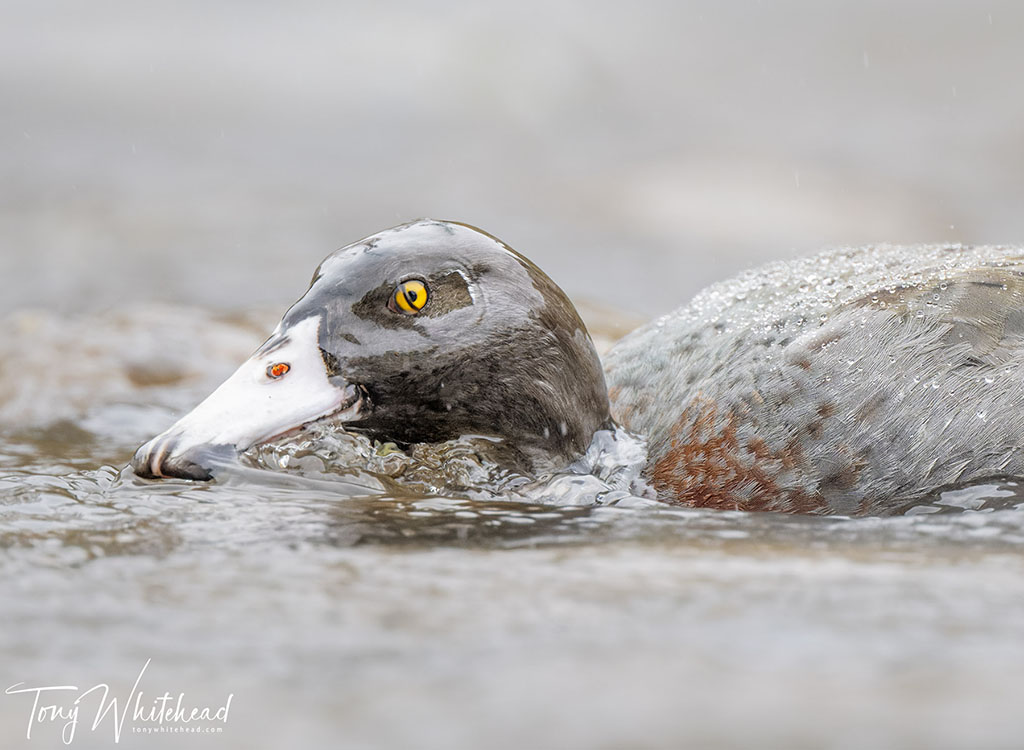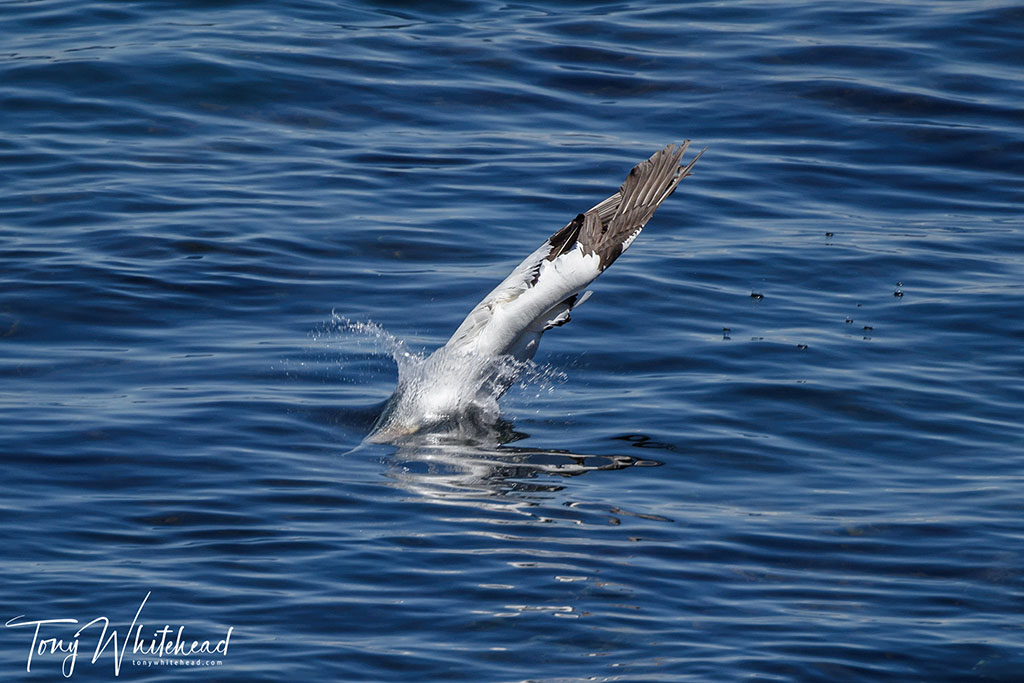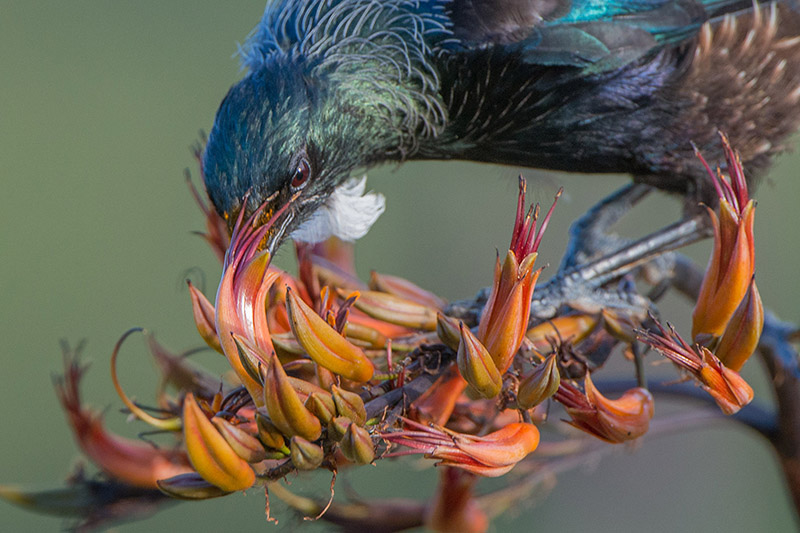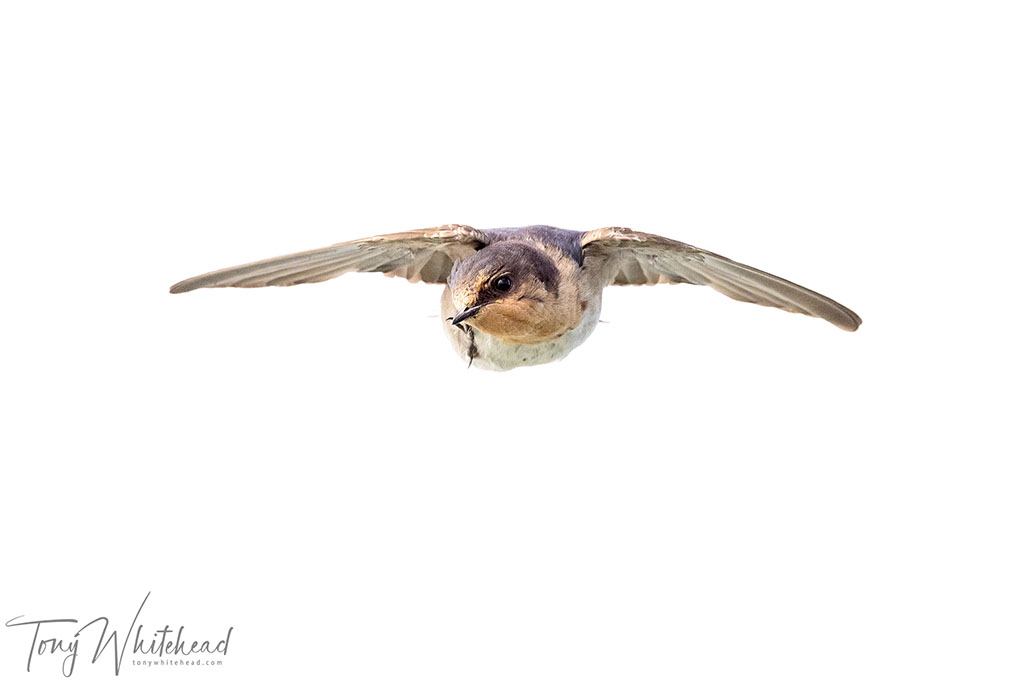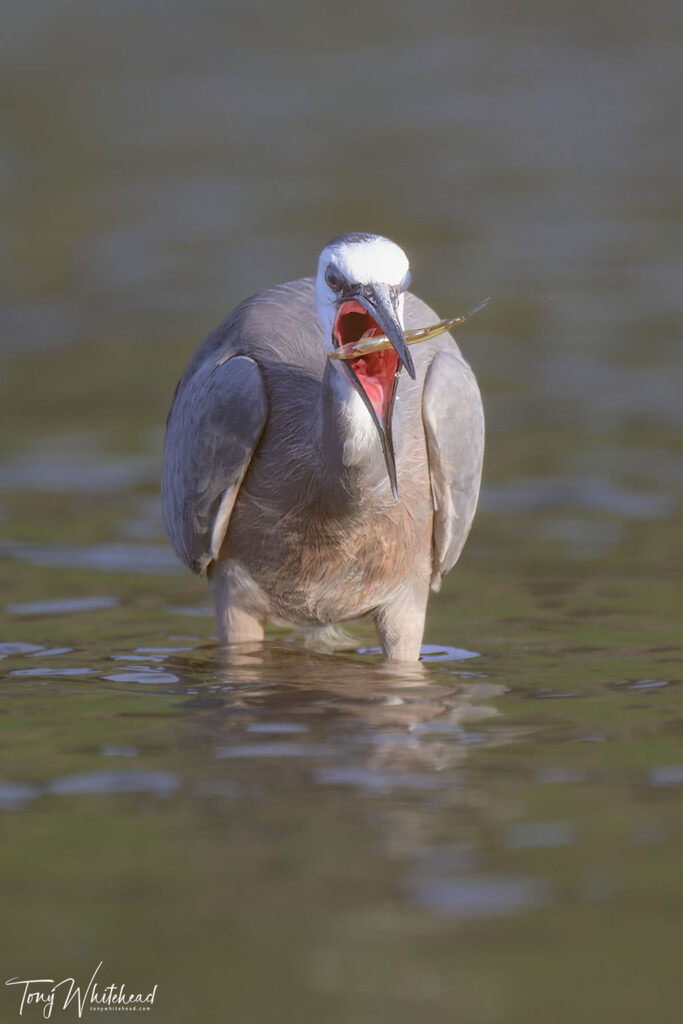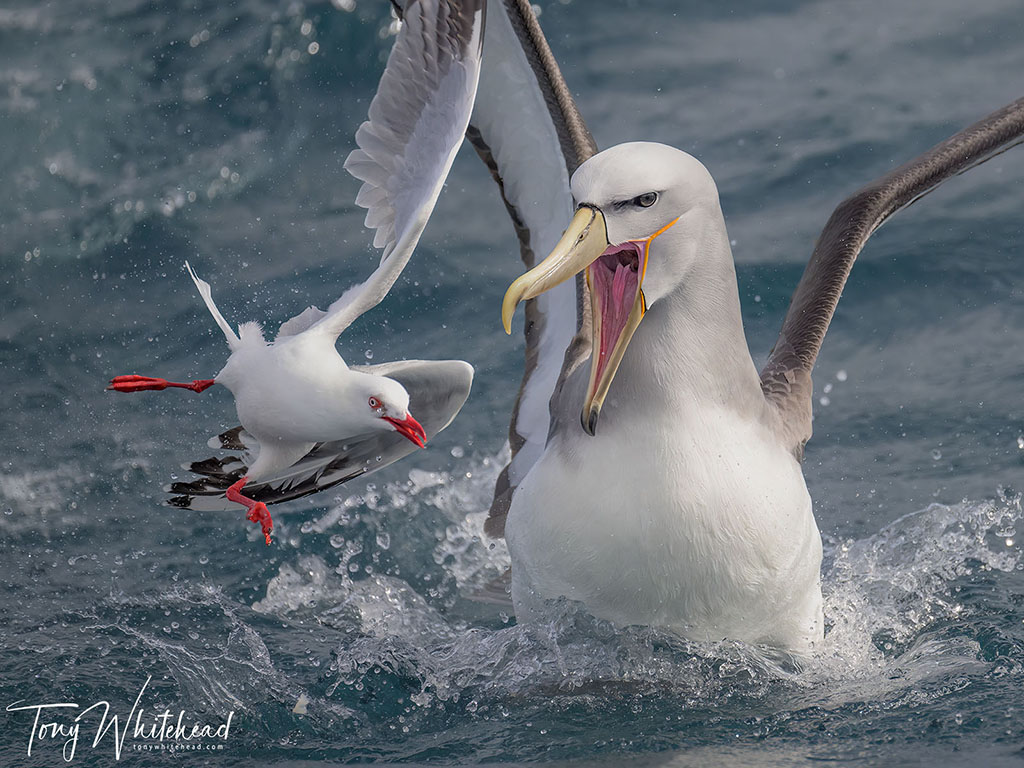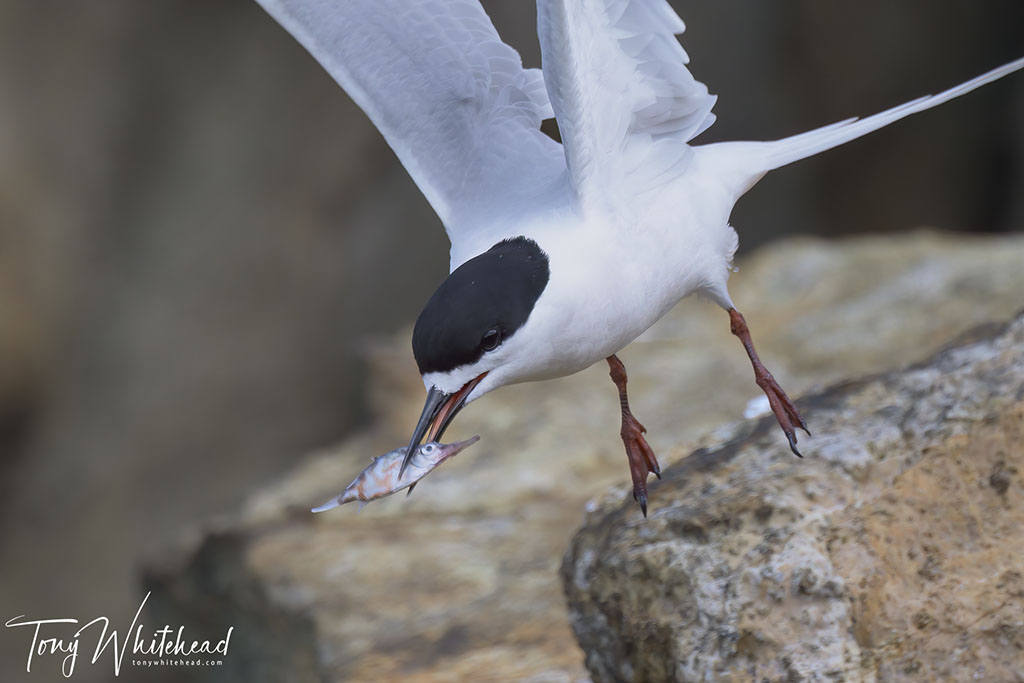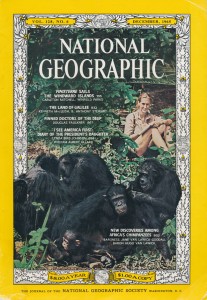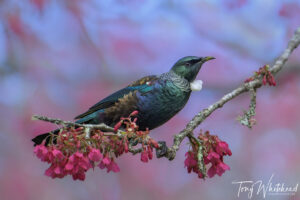One of the things that delights me with photography is the the ability to see and appreciate things that occur too quickly for the eye to see in real life. While photographing Whio/Blue Ducks earlier this year and using the Nikon Z9 at 20 fps, I captured a number of feeding sequences as the ducks lifted their heads from the water after feeding under rocks for aquatic invertebrates. This clearly showed how, as the nictitating membrane sweeps forward to reveal the cornea, it cuts through the surface tension of the water. This results in a sharp edged aperture in the water film and allows them immediate clear vision into the air.
Similarly, in these previously shared images, freezing the moment an aerial hunter intercepts it’s prey shows something that cannot be seen with the naked eye.
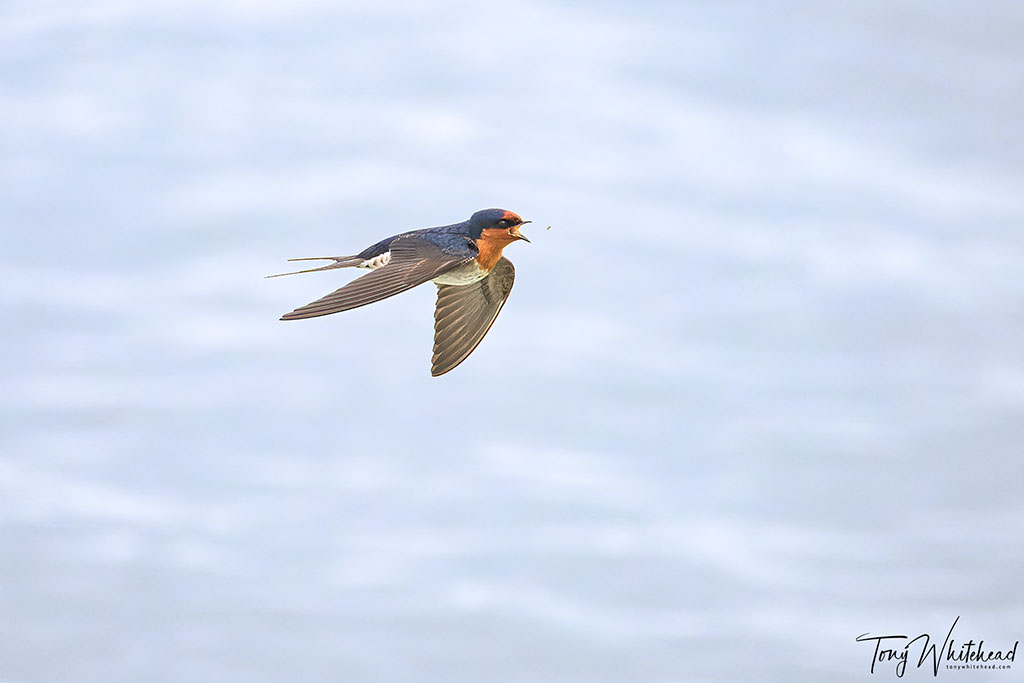
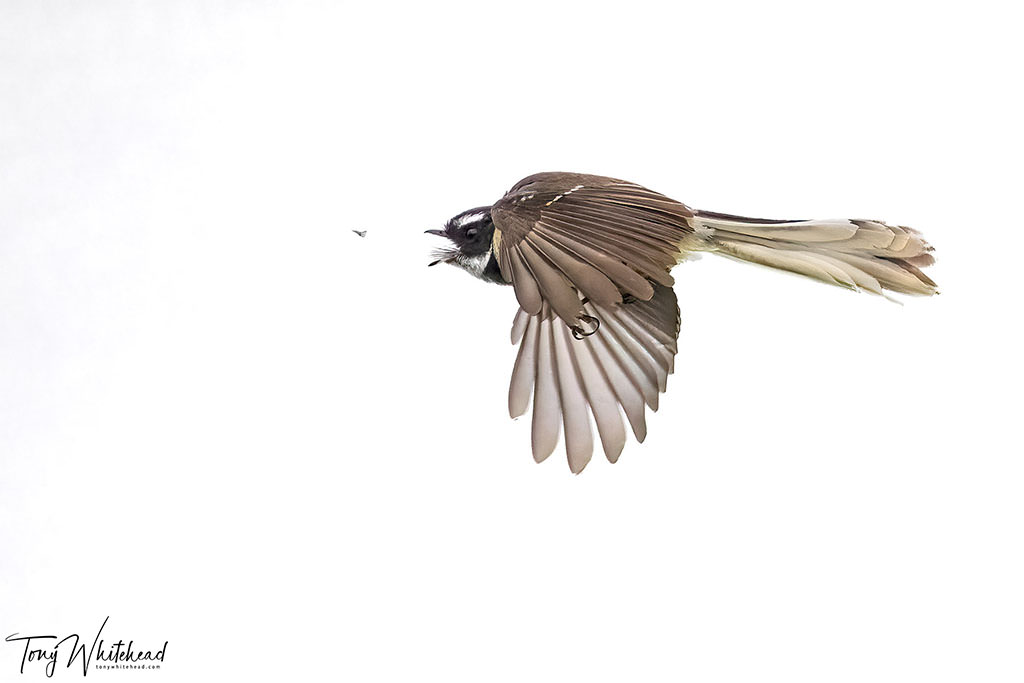
This next images shows the moment a Tākapu/Australaisan Gannet enters the water in a dive in pursuit of fish. It shows the bill cleaving a path into the water and the extended wings laid down the sides to minimise drag, things that happen so fast in real life that all we see is a splash.
Tui feeding in Harakeke/Flax is a common summer sight but unless you freeze the motion you cannot appreciate the superb adaptation of the flower to the Tui face to maximise pollen transfer. Different stamen lengths cup the bird’s face perfectly.
Quirky moments can be interesting, revealing presumably relatively common behaviour we cannot appreciate. This Welcome Swallow needed to scratch an itch while flying.
If you’ve watched a heron fish you will known that it is an exercise in patience. Slow stalking, motionless watching and then a sudden dart for prey. In real time everything happens so fast you cannot see the details. This next image shows an unlucky fish about to start a journey down the heron’s neck. The size of the mouth is quite impressive and never seen unless frozen in time.
Equally the desperation of the interaction between a Toroa/Salvins Albatross and Tarāpunga/Red-billed Gull can only be fully appreciated with motion frozen, all details being lost in a blurring of splash and feather in real time.
Another benefit of freezing motion is in accuracy of identification. When photographing terns it is possible to identify a bird carrying prey but without a photo it can be hard to identify the prey accurately. The following photo taken at Aramoana Mole shows a Tara/White-fronted tern with a Bellowsfish.
To a bird photographer this looked interesting and despite having an interest in fish I was not sure what the fish was exactly. A post of the same subject by Edin soon had an ID as a Bellowsfish posted in a comment from Irene Middleton.
This is a refreshing illustration of the power of rapidly and widely disseminated communication acting in a positive way to harness the knowledge of people of differing but intersecting interests. It is this aspect that can be leveraged with citizen science to broaden observations and gather information that can be analysed by experts. This is the aim of the Tara Photography Competition being run by the Northern New Zealand Seabird Trust with the support of Birds NZ. The aim is to obtain visual records of this breeding season along with images of prey being caught to build up knowledge around Tara/White-fronted terns. If you are interested in helping this project it is worth signing up to enter. Entry is free to BirdsNZ members with a nominal entry fee (all of which goes directly back into Tara research) for non-members. There are some great prizes on offer as well as the satisfaction of contributing directly to research.
